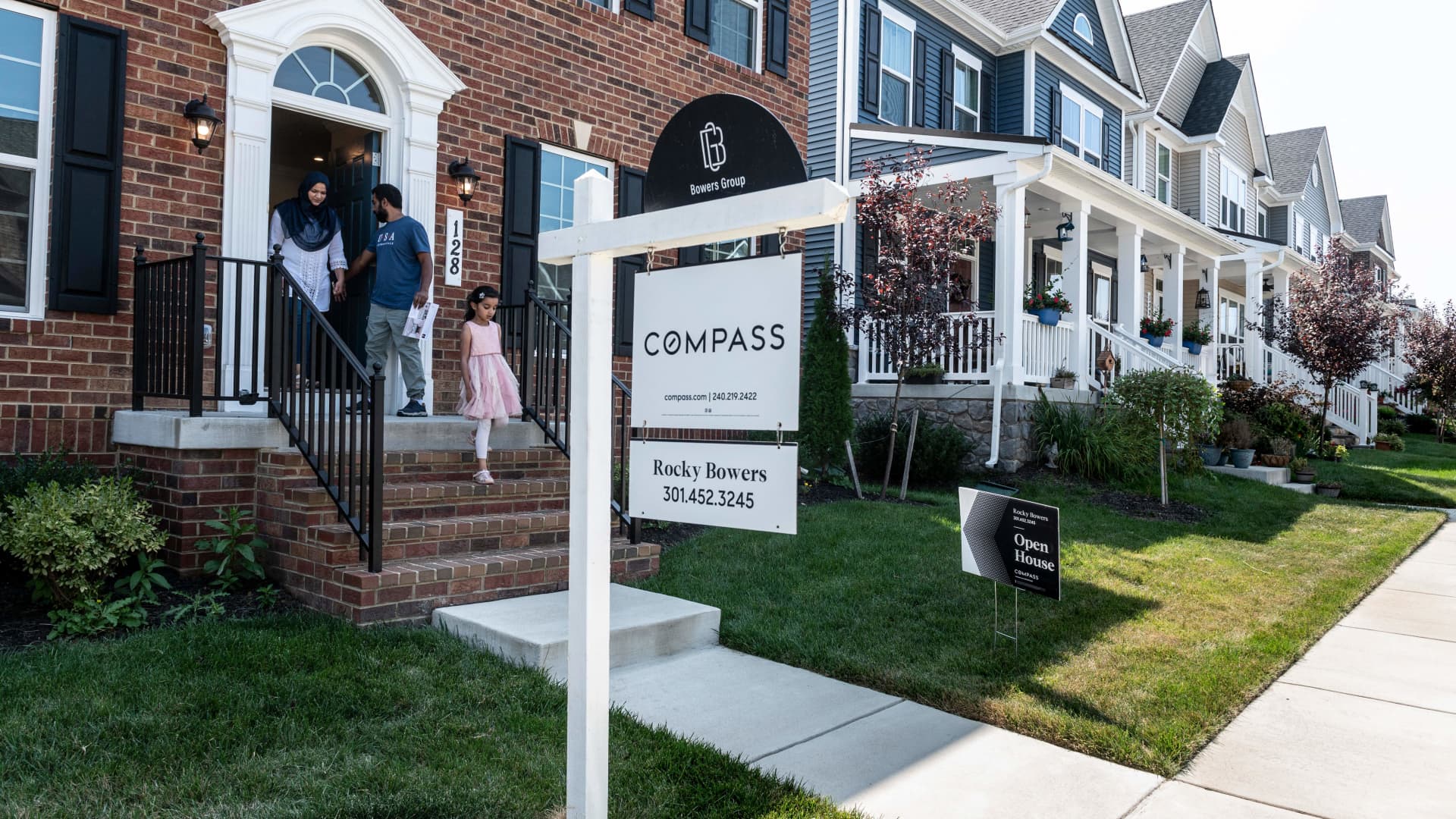The Spring housing market is defying expectations that prices would cool and competition would ease.
Higher mortgage rates usually cool both prices and demand, as they did last year, but that’s not the case now. There are still too few homes for sale because current homeowners can’t afford to move, and it’s keeping prices high.
Home prices in February were 5.5% higher than they were in February of last year, according to CoreLogic. That annual comparison is shrinking slightly, but the price gain from January to February was nearly twice what it normally is for that time of year, suggesting this Spring’s market started out strong despite higher interest rates.
The average rate on the 30-year fixed mortgage hit its latest high in October, briefly crossing over 8%. It then dropped back into the 6% range for much of December and all of January. It rose back over 7% in February, which should have cooled the market.
But sales of newly built homes, which are counted by contracts signed during the month, were nearly 6% higher in February year over year. Pending sales of existing homes, also based on signed contracts, were down 7% that month from the year before, but not for lack of demand.
Lock-in effect
The real trouble in today’s existing home market is lack of supply. There are more new listings this Spring than last, but supply is still 40% below where it was pre-pandemic.
That’s partly because current homeowners are plagued by a lock-in effect: They won’t list their homes for sale because the cost of moving up is so high.
In the 22 years before the Federal Reserve started raising rates in 2022, upgrading to a 25% more expensive home would have increased the average homeowner’s monthly payment of principal and interest by 40%, or about $400 on average, according to data from ICE Mortgage Technology. Moving to a similar house across the street wouldn’t change their payment at all.
In stark contrast today, the average homeowner with a near record-low mortgage rate would see their monthly payment shoot up 132%, or roughly $1,800, in order to move up to a 25% more expensive home. Buying the same home they’re in now would increase their monthly payment by 60%, according to ICE.
Those increases represent national averages and can vary market to market. For example, moving up would add $604 to a homeowner’s monthly payment in Buffalo, New York, an increase of 108%; and $4,517 in San Jose, California, an increase of 161%, according to the ICE data.
“Lower rates would ease the calculation for many and make moves more reasonable. But the net result continues to be too few homes for too many buyers,” said Andy Walden, ICE’s vice president of enterprise research. “Until that fundamental mismatch is addressed, simple supply and demand will continue to press on both inventory and affordability.”
What rate would unlock the market?
If rates fell to 6%, the monthly payment increase to trade up to a 25% more expensive home would ease from a 103% average jump to 88% – a modest but welcome improvement, according to Walden.
If rates fell to 5%, moving up would require a 68% larger payment, still much higher than the long-run average of 39%, but perhaps enough to motivate someone with a compelling need or desire to upgrade.
While not all borrowers have record-low rates, more do in pricey markets because the breakeven point on the cost of a refinance is typically lower for higher-balance borrowers, so they have more incentive to do it. They also likely have higher balance loans, so moving up to a higher rate would be even costlier. That’s why the lock-in effect is stronger in much of California, where homes are most expensive.
The vast majority of borrowers today, 88.5%, have mortgages with rates below 6%, according to Redfin. Roughly 59% have rates below 4%, and close to 23% of homeowners have rates below 3%.
Those shares are slightly lower than they were last year, because some people did choose to move in the last year, but it shows what the market is up against, especially given high and still-rising home prices.
A new report from Zillow shows the U.S. now has a record-high 550 “million-dollar” cities, or cities where the typical home is worth $1 million or more. That is 59 more million-dollar cities than there were in 2023, when home values were weakening due to rising mortgage rates.

